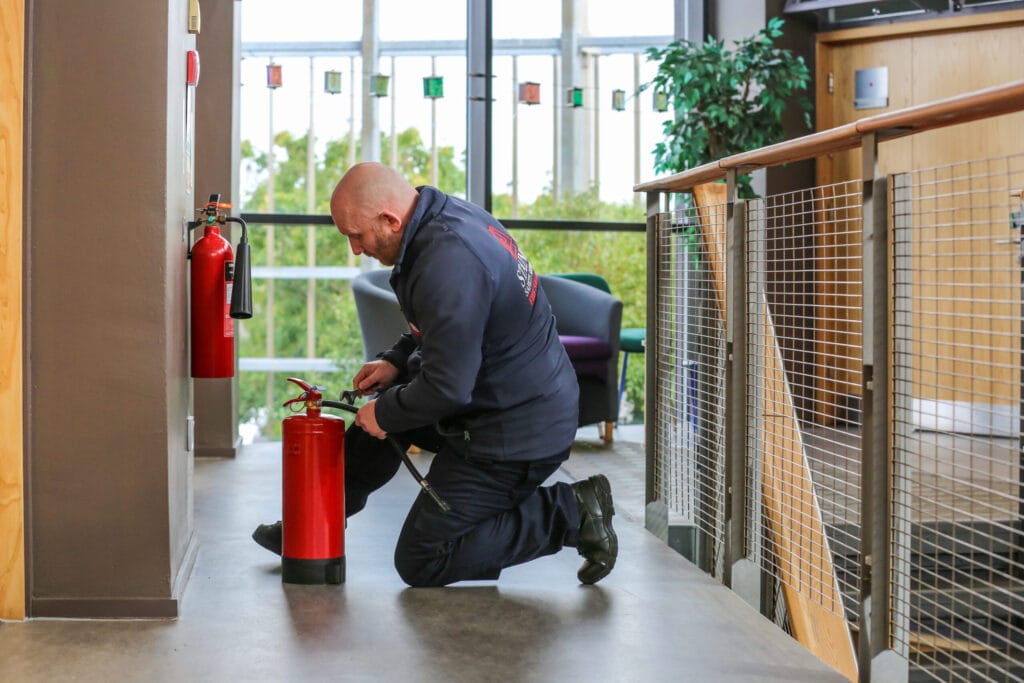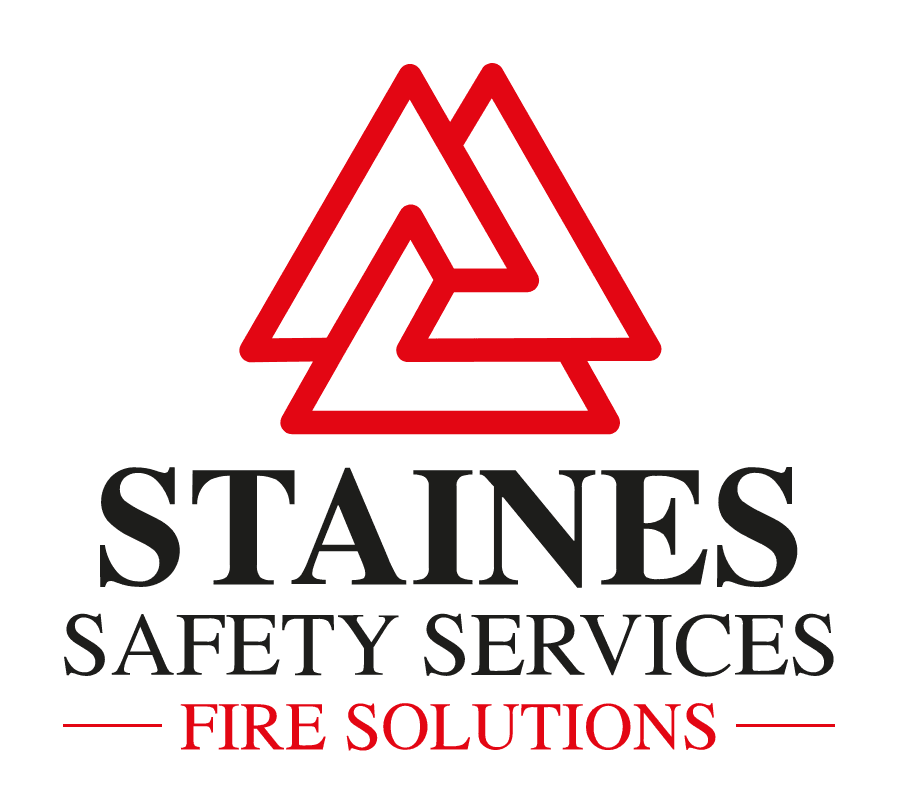Understanding Fire Extinguisher Regulations in England and Wales: A Comprehensive Guide
Fire safety is a critical responsibility for businesses, landlords, and property managers in England and Wales. For those unfamiliar with the different types, our guide to fire extinguishers will help ensure compliance with fire extinguisher regulations is essential to protect lives, property, and avoid legal penalties. This blog post breaks down the key laws and regulations governing fire extinguishers, including recent updates, to help you stay compliant and keep safety first. We’ll cover the Regulatory Reform (Fire Safety) Order 2005 (RRO), the role of the Responsible Person, and practical steps for compliance, all while incorporating fire safety compliance best practices for businesses and residential buildings.
What Are the Fire Extinguisher Regulations in England and Wales?
The cornerstone of fire safety legislation in England and Wales is the Regulatory Reform (Fire Safety) Order 2005 (RRO), often referred to as the Fire Safety Order (FSO). This law applies to all non-domestic premises, including commercial buildings, offices, factories, and the communal areas of multi-occupied residential buildings like blocks of flats. It mandates that appropriate fire-fighting equipment, including portable fire extinguishers, must be provided where there is a risk of fire.
Key Updates to Fire Safety Laws
Recent legislative changes have strengthened fire safety requirements, particularly following the Grenfell Tower Inquiry.
The Fire Safety Act 2021, effective from May 2022, clarified that the RRO applies to a building’s structure, external walls (including cladding, balconies, and windows), and entrance doors to individual flats in multi-occupied residential buildings. Additionally, the Fire Safety (England) Regulations 2022, effective from January 2023, introduced new duties for high-rise residential buildings (at least 18 meters or seven storeys) to enhance fire safety measures.These updates emphasize the importance of fire risk assessments and the provision of adequate fire-fighting equipment, such as fire extinguishers, to mitigate risks effectively.
Who Is Responsible for Fire Extinguisher Compliance?
Under the RRO, the Responsible Person (RP) is accountable for ensuring fire safety compliance. This could be:
- An employer in a workplace
- The owner or manager of a commercial property
- The managing agent or landlord of a multi-occupied residential building
The RP must conduct a fire risk assessment to identify potential fire hazards, evaluate risks to people (referred to as “Relevant Persons”), and implement appropriate fire safety measures, including the provision and maintenance of fire extinguishers. Failure to comply can result in fines, imprisonment, or other penalties.
Fire Extinguisher Requirements Under UK Law
To comply with UK fire extinguisher regulations, businesses and property managers must follow these key requirements:
1. Provision of Fire Extinguishers
- Minimum Requirements: The RRO mandates at least two Class A fire extinguishers (suitable for fires involving wood, paper, or textiles) on every floor of a commercial building, unless the premises are very small (e.g., a kiosk). Common Class A extinguishers include 3-litre or 6-litre foam or 9-litre water extinguishers.
- Additional Extinguishers: Depending on the premises’ activities, other types of extinguishers may be required:
- CO2 extinguishers (minimum 2kg, or 5kg for equipment over 415 volts) for electrical fires.
- Wet chemical extinguishers for kitchens with deep-fat fryers.
- Dry powder extinguishers for gas risks, such as boiler rooms.
- Quantity: The number of extinguishers depends on the building’s size and risk level. A rough guide is one 9-litre water extinguisher per 200 square meters of floor space, rounded up. Fewer may be needed if automatic suppression systems (e.g., sprinklers) are in place.
2. Placement of Fire Extinguishers
- Extinguishers must be easily accessible, typically near exits, fire alarm call points, or specific fire hazards (e.g., kitchens).
- They should be mounted on walls or stands, with handles at 1.5m (for extinguishers under 4kg) or 1m (for those over 4kg) from the ground.
- The 30-meter rule (British Standard BS5306) ensures no one is more than 30 meters from an extinguisher on any floor.
- Clear fire extinguisher ID signs must be visible, explaining the extinguisher type and usage instructions.
3. Maintenance and Testing
- Monthly Visual Inspections: The RP must conduct monthly checks to ensure extinguishers are in place, undamaged, and have intact pins and seals. These checks should be documented.
- Annual Servicing: A qualified engineer, certified under standards like BAFE, must perform a full inspection annually to ensure compliance with BS5306 standards.
- Extended Servicing: Some extinguishers require overhaul services every 5 or 10 years, depending on the type.
4. Fire Safety Signage
- Businesses must display mandatory signs, including:
- Fire Action Notices: Explaining what to do in case of a fire.
- Fire Extinguisher ID Signs: Identifying and locating extinguishers.
- Fire Exit Signs and Fire Alarm Call Point Signs where applicable.
Fire Safety Training and Fire Marshals
The RRO requires that staff receive fire safety training to understand extinguisher use and evacuation procedures. Fire marshals or wardens should be appointed to:
- Use fire extinguishers where safe and appropriate.
- Contact emergency services.
- Assist with evacuations.
Training should be refreshed annually, and fire drills must be conducted regularly (at least once or twice yearly). Fire marshals are ideally trained by fire safety professionals to ensure competence.
Consequences of Non-Compliance
Failing to comply with fire extinguisher regulations can lead to severe consequences:
- Fines and Imprisonment: Breaching the RRO may result in unlimited fines or up to seven years in prison for serious negligence.
- Insurance Issues: Non-compliance could lead to refused insurance payouts in the event of a fire.
- Safety Risks: Inadequate or faulty extinguishers increase the risk of injury or death.
Practical Steps for Compliance
To ensure your premises meet fire safety regulations, follow these steps:
- Conduct a Fire Risk Assessment: Identify hazards and implement measures like extinguishers and alarms. Businesses with five or more employees must document this assessment.
- Choose the Right Extinguishers: Consult a fire safety professional to select extinguishers based on your premises’ risks. Visit GOV.UK’s fire safety guidance for official advice.
- Install and Maintain Equipment: Ensure extinguishers are correctly positioned, signed, and serviced by professionals like BAFE-registered organizations.
- Train Staff: Provide regular training and appoint fire marshals. Resources like Red Cross First Aid Training can help.
- Stay Updated: Monitor updates to fire safety laws, such as those from the Fire Safety Act 2021 and Fire Safety (England) Regulations 2022.
Recent Updates to Fire Extinguisher Regulations
As of July 2025, the latest changes include:
- Fire Safety (England) Regulations 2022: Effective January 2023, these regulations mandate additional duties for high-rise residential buildings, such as providing electronic building plans to fire services and ensuring residents understand fire door importance.
- Building Safety Act 2022: Introduced the “Accountable Person” role for high-risk buildings, requiring cooperation with RPs to manage fire and structural risks.
- Section 156 of the Building Safety Act 2022: Effective October 2023, this strengthens fire safety across all RRO-regulated premises, emphasizing collaboration among RPS.
Conclusion
Compliance with fire extinguisher regulations in England and Wales is non-negotiable for ensuring safety and avoiding legal repercussions. By understanding the Regulatory Reform (Fire Safety) Order 2005, staying informed about updates like the Fire Safety Act 2021 and Fire Safety (England) Regulations 2022, and implementing practical measures, you can protect your premises and people.
Regular fire risk assessments, proper extinguisher placement, and professional maintenance are key to meeting legal standards.For more detailed guidance, visit GOV.UK’s fire safety page or consult a BAFE-registered fire safety professional. Stay proactive, stay compliant, and prioritize fire safety compliance to keep your workplace or residential building safe.

